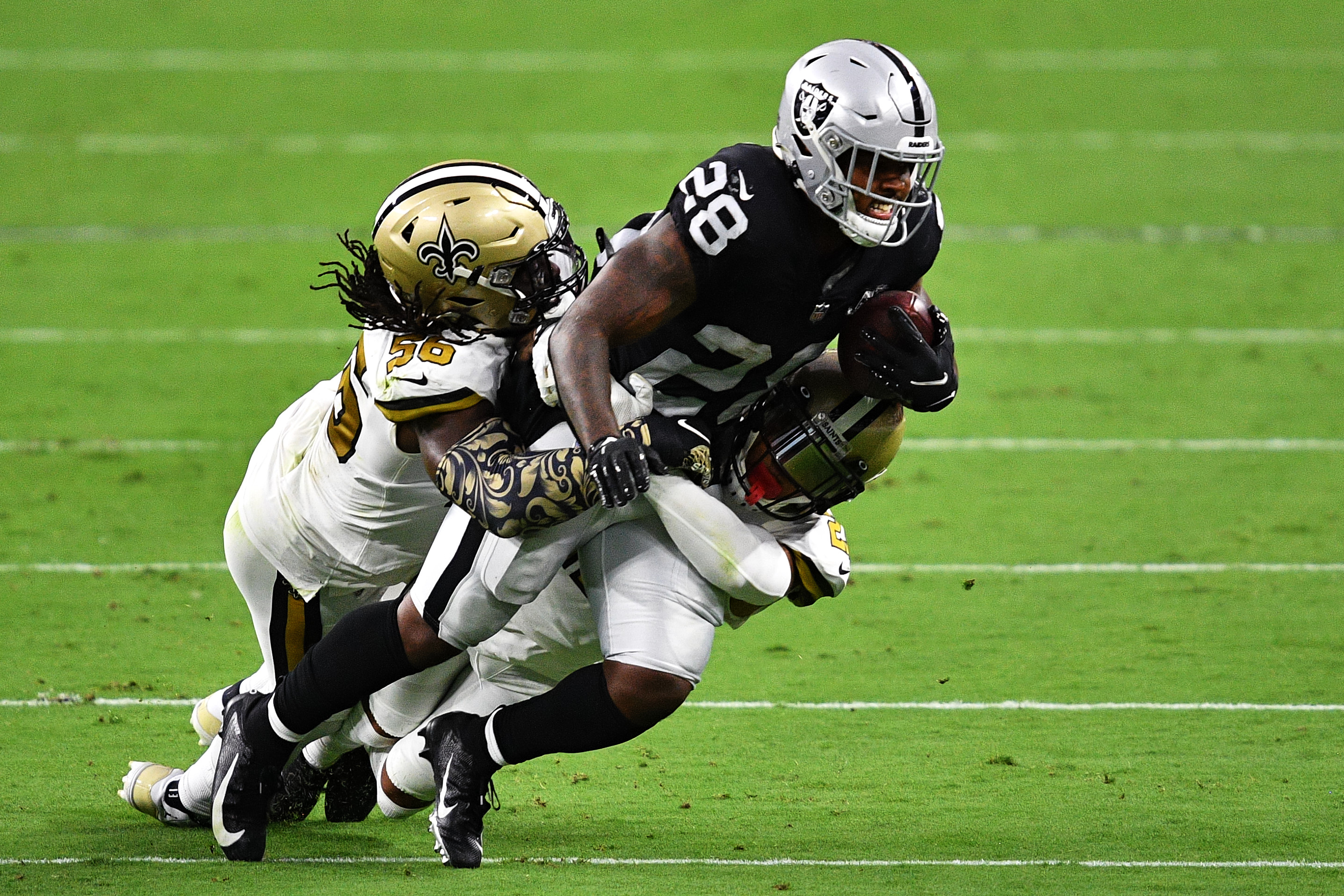Networks Declare Victory in Unusual Upfront Market
Pricing positive amid pandemic, though volume declines

There has never been a year like 2020 and there’s never been an upfront like 2020’s.
At this point they’re not saying it out loud, but buyers and sellers say the 2020-21 upfront auction of ad sales has concluded, just in time for the start of the fall season. Network executives said it wasn’t as bad as it could have been and professed to be pleased about how resilient the TV advertising market was during a pandemic.
“We got all the deals done. Most of them came in very late,” said one network advertising sales executive. “It’s been a long process, but it ended well for us.”
This optimism is hard to quantify, and comparisons to previous years are difficult to make, because of big changes in the market. Ratings this year include out-of-home viewing and the networks were selling tons of new digital inventory, which makes past pricing and volume numbers irrelevant.
“The numbers are very muddy this year, not just because of out-of-home but because the digital side of the business has expanded a lot,” said a sales executive who, like several individuals quoted in this story, asked not to be identified by name because of company policies against commenting on contract negotiations.
Of course, even in a “normal” year, the smoke-and-mirrors numbers that surface after the upfront aren’t predictive of what media companies will report as advertising revenue when their earnings reports come out.
All Sides Sought Flexibility
Multichannel Newsletter
The smarter way to stay on top of the multichannel video marketplace. Sign up below.
“The big push and pull was around flexibility, and of course price,” an agency media buyer said. “Agencies wanted much greater flexibility. The networks came back and said, ‘What’s the point of upfront then?’ So I think there were definitely some concessions on flexibilities overall, but not as much as requested.”
“To get the market moving, the networks needed to incent our client to put budgets together with all the uncertainty they were facing,” another agency buyer said. Options moved from 60 days to 45 days. Some upfront buys moved from 25% cancelable to 50%. And while fourth-quarter orders were firmed up, some clients have until October to lock in exactly what they’re paying for during Q1 through Q3.
“There was definitely pressure to make TV more digital in terms of flexibility and option terms,” A+E Networks president, ad sales Peter Olsen said. “There was a blending of digital terms and TV terms.”
The bottom line, according to people engaged in the market, is that volume in the upfront finished down about 10% to 15% for linear TV, while prices on a cost-per-thousand viewers (CPM) basis again managed to increase, disappointing some buyers and clients. Last year, $23.9 billion was spent in the upfront auction of ad sales, including $10.2 billion on broadcast ads and $11.7 billion on cable, according to Media Dynamics.
”It was probably the equivalent of a low- to mid-singles market, which is not disastrous in an economy like this,” A+E’s Olsen said.
“In all of our key categories, in entertainment, and sports and news, we’ve achieved, depending on the client, low to mid single-digit price increases across the board,” Fox CEO Lachlan Murdoch boasted at the Bank of America investor conference earlier this month. “That’s a tremendous result.”
Deals were made much later in the process — closer to Labor Day than to the Fourth of July, when media buyers start to begin their summer vacations because the upfront is wrapped up. One big reason for the delay was buyers waiting to see if sports, particularly NFL football, would be played. One network finished a deal on Sept. 18, just two weeks before the commercials are scheduled to air. Details are still being ironed out as the new terms both sides agreed to get parsed.
There is still money waiting to be spent. Ad executives expect this year’s calendar upfront — ads bought for the year starting in January — to be significantly larger this year and to be negotiated in October, a month earlier than usual.
“A large percentage of that 15% [decline in volume] are advertisers who moved to calendar, or scatter, and just needed more time, as opposed to stopped buying TV,” an agency media buyer said. “So at the end of the year, it won’t be down 15%, I don’t think.”
On top of that, prices are still hovering 10% to 20% above upfront in the scatter market for ad inventory not committed during the upfront auction.
“We’ve withheld; we’ve probably sold about 5% less volume than we would otherwise have done, say, last year and we’re comfortable doing that because of the strength in the scatter market,” Murdoch said.
None of that could have been predicted earlier this year.

Upfront’s Obit Was Premature
People were just learning about COVID-19 on March 3, when Fox News Channel canceled an upfront event scheduled for March 24. A week later, when NBCUniversal, Fox, ViacomCBS and The Walt Disney Co. canceled their lavish annual May upfront presentations and parties, it was clear the coronavirus would have a huge impact on the TV advertising business.
For a time, there were questions about whether or not there would even be an upfront — or a new television season to run commercials in. There were surveys and estimates that predicted ad spending could plunge by 30%, which in fact did happen in the early days of the recession caused by a virus that kept people at home and shut down businesses.
“The prognostication in April that there’s never going to be another upfront, that this is going to be the end of buying and selling as we know it, that didn’t really come to fruition,” John Halley, chief operating officer of advertising revenue at ViacomCBS, said at Future’s Advanced Advertising Summit.
Procter & Gamble made a big stink about it being time to change the upfront and shift to a calendar upfront. But the packaged-goods giant quietly went to the networks and cut early deals, looking to get better pricing.
“I’m surprised they didn’t get called out for that,” a network executive said.
Media agencies saw an opportunity to reset the market and get lower prices. “There was this narrative early on the minds of clients,” a network executive said. “They were thinking there was going to be a rollback. You were hearing 20%, ridiculous numbers.”
Most of the networks dug in their heels and eventually, buyers had to put their money down and get their clients on the air. One buyer said the turning point was when COVID shut down television production. “In our models, supply went from being down 15% to being down 18%, 22%, 25%,” an agency media buyer said. “All of a sudden, it became a seller’s market.”
“Yes, there were concessions made around flexibility,” Halley said. “It had to be done.” But in the end, the market “landed in a place that supported the model that we work under,” he said. Pricing moved in a positive direction and, “depending on what parts of the business you’re talking about, the volume was also there.”
On top of pricing, some agency executives were annoyed the networks waited until after many deals were struck to announce when they would start to air big hits, like NBC’s This Is Us.

Nielsen threw a brief monkey wrench into the market when it said it wouldn’t be adding out-of-home viewers to its 2020-21 ratings as planned, a move that would lift audiences of entertainment programming by anywhere from 3% to 6%, network executives said. The networks erupted and Nielsen quickly reversed its course.
Digital inventory was also a big factor with ViacomCBS owning Pluto TV, Fox buying Tubi and The Walt Disney Co. taking control of Hulu.
One market participant estimated that linear volume was down 15%, while nonlinear revenue rose 50%. That leaves overall revenue down about 10% because, last year, media companies got 90% of their revenue from linear and 10% from nonlinear. This year it will be 80%-20%. “Advertisers are following the audience,” the participant said.
With their new OTT services, the networks can also offer buyers top shows like Fox’s The Masked Singer at better prices when they stream and attract a younger audience than when they appear on broadcast.
They could also offer buyers better pricing on broadcast if they agree to increase the dollars they’re spending on their streaming platforms.
“The nonlinear space is creating a lot of discounts,” a network executive said. “The dream that these companies have is that the streaming services are going to take off. And then you can reconfigure what the business really is.”
It was probably the equivalent of a low- to mid-singles market, which is not disastrous in an economy like this.
Peter Olsen, A+E Networks
Talks Get Personal
Negotiating an upfront during a pandemic turned out to be a more personalized experience, some executives said. While the big presentations and parties were replaced by Zoom calls, negotiations tended to be more one on one with senior execs as the stakes grew and deadlines neared.
“A lot of times our negotiations are done with a group of us in one room and a group from the agency in another room, but this was a lot more one-on-one discussions than large group with large group,” one network executive said.
Where does this upfront market leave the business?
“Well, we all had had to be flexible,” a network executive said. “But we also have to manage our business, and I think we’re going to learn whether we can live with what we’ve agreed to.”
One buyer said he remains concerned that the networks can’t do anything to keep ratings from continuing to fall. “Our retail clients don’t want their fourth quarter schedule to underdeliver and to get make-goods on some digital channel in January,” the buyer said. λ
Jon has been business editor of Broadcasting+Cable since 2010. He focuses on revenue-generating activities, including advertising and distribution, as well as executive intrigue and merger and acquisition activity. Just about any story is fair game, if a dollar sign can make its way into the article. Before B+C, Jon covered the industry for TVWeek, Cable World, Electronic Media, Advertising Age and The New York Post. A native New Yorker, Jon is hiding in plain sight in the suburbs of Chicago.

